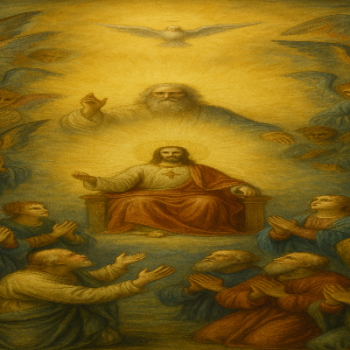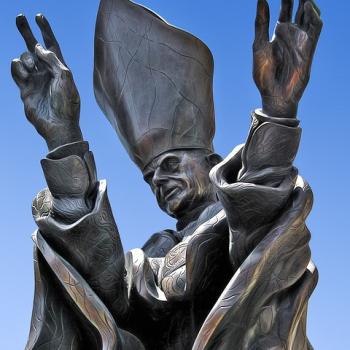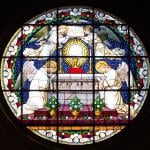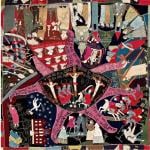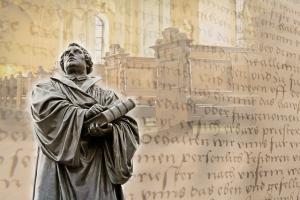
God is truth, Scripture tells us. And if that is the case, then a logical consequence of that fact is that the Church He founded is responsible for promulgating that truth and militating against any false teachings.
In this paper, I will provide an outline of the most prominent claims and teachings contrary to the truth that the Church has been entrusted with. These claims and teachings are known as heresies.
Before commencing, it is beneficial to note that the Catholic Church defines heresy as, “The obstinate post-baptismal denial of some truth which must be believed with divine and Catholic faith, or it is likewise an obstinate doubt concerning the same; apostasy is the total repudiation of the Christian faith; schism is the refusal of submission to the Roman Pontiff or of communion with the members of the Church subject to him” (Catechism of the Catholic Church, paragraph 2089).
Owing to the sheer number of heresies that may be listed, I will provide a basic outline by organizing the heresies into seven categories. They are Docetism, Montanism, Adoptionism, Sabellianism, Arianism, Pelagianism, and Gnosticism.
Docetism
Making difficult the effort to categorize the various heresies is the fact that there is often some intermingling among the heresies. This is the case with Docetism, as it shares some of its philosophy with Gnosticism.
Docetism is a system of thought that appeared very early in the history of the Church. Docetism denied that Christ was born, that He took a human body, suffered, and died. Rather, Docetism argued that Christ was a type of phantom, only appearing to have a human body.
The foundation upon which Docetism was founded was the belief that things composed of matter (e.g., bodies) were corrupted and evil. Therefore, Docetism thought it impossible that God – as a pure spirit – could or would take a human body.
Such a view that accepts Christ as a type of phantom is in direct contradiction to Jesus’ own words (see John 20:27). The Council of Nicea in 325 officially condemned Docetism.
Montanism
Montanism (named after its founder, Montanus) was a heresy that appeared in the second century, predominantly in present-day Turkey.
The basic teaching of Montanism was that the Holy Spirit was manifesting itself in and through Montanus and his followers. While this teaching was unusual, it was not, initially, at variance with the doctrines and authority of the Catholic Church.
However, Montanus claimed that the Holy Spirit was speaking through him and expanding upon the teachings of Christ. Montanus went even further, claiming that he was the embodiment of the Holy Spirit.
It was Montanus’s claim that his teachings were superior to the teachings of the Catholic Church and that Christ’s revelation was still ongoing that led to Montanism being considered a heresy. Montanus and his followers were excommunicated circa AD 177.
Adoptionism
Adoptionism is a Christological heresy dating to the second century, whose name hints at the heresy involved.
While there are several variations of Adoptionism, the principal argument underlying it is that Jesus, as a human being, was the adopted son of God. Two Spanish Bishops, Elipandus and Felix, expounded the initial version of Adoptionism, although a version of it dates back to Paul of Samosata in the third century.
Adoptionsim asserts that, within Christ, there is a double sonship. Christ has a Divine nature that, by generation and grace, makes Him the Son of God. However, Christ, in His human nature, is the adopted Son of God by adoption and grace. The premise for this argument is that before Jesus became the adopted Son of God, He was only a sinless human being.
Owing to the fact that Adoptionism stands in contradiction to Scripture (See the Gospel of John), Adoptionism was declared a heresy by Pope Hadrian and the Council of Frankfurt.
Sabellianism
Sabellianism was a heresy occurring in the third century. Known also as Monarchianism, Sabellianism denied the Personhood of the members of the Holy Trinity.
Sabellianism was named after its founder, a third-century Roman priest named Sabellius. Sabellianism denies that Father, Son, and Holy Spirit are separate Persons of the Godhead. Rather, Sabellius thought that the Trinity represents modes, aspects, or phases of one single Divine Person. The appeal of Sabellianism appears to lie in the fact that its formulation of God is easier to understand than three Persons sharing one Divine essence.
Yet Sabellianism contradicts Scripture (e.g., Matthew 28:19). Sabellius was excommunicated in AD 220. In AD 382, the Council of Rome condemned Sabellianism as heretical.
Arianism
Arius was a third-century priest of Greek origin whose teachings led to one of the most significant heresies in Christianity.
A core belief of Catholicism is that Jesus is God. Phrased differently, Jesus shares a Divine essence with the Father and the Holy Spirit. The Arian heresy, however, denies the Divine essence of Jesus.
The Arian heresy is predicated on the premise that the immutability and uniqueness of God cannot be communicated to another being. Consequently, Arianism reduced Jesus to a creature – albeit a holy one – who is worthy of worship even though He is not God.
Such a view contradicts Jesus’ own words (e.g., “I and the Father are one”) and brings into question the holiness of Jesus. Furthermore, as pointed out by Saint Athanasius, Arianism reduces Jesus to a type of demigod that introduces polytheism into Catholic theology. Perhaps even more damaging, Arianism undermines the redemptive work of Jesus since only God can reconcile God and man.
In AD 325, the Council of Nicea condemned Arius and issued a creed (the Nicene Creed) to counter Arius’ teaching. The Nicene Creed states that Christ is of one substance (essence) with God.
Pelagianism
There is little known about the author of the heresy that took his name. Pelagius was likely born in England and eventually became a monk and theologian.
The foundational teaching of Pelgianism is the denial of original sin. This view allows for the possibility of human perfectibility while appearing to eliminate the need for a Savior. If human beings are not damaged by original sin, there is no need for salvation. Extending this philosophy to its logical conclusion would suggest that the Incarnation and salvific work of Christ was unnecessary or even a mistake.
Indeed, Pelagius suggests that Jesus is more a model for human conduct than a Savior. Pelagius writes, “In the teachings and the example of Jesus Christ, we learn the general principles of behavior which pleases God.”
In AD 418, Pelagius was declared a heretic. The Council of Ephesus would later condemn Pelagianism in AD 431.
Gnosticism
The origin of Gnosticism is murky, at best. It is evident, however, that forms of Gnosticism predate the advent of Christianity.
Essentially, Gnosticism refers to various pantheistic sects that believed knowledge (specifically, spiritual knowledge) was the foundation or prerequisite for salvation. Additionally, Gnostics thought that physical matter was corrupt and evil.
These two teachings of Gnosticism, that salvation was predicated upon one’s knowledge and the view that matter was evil, placed it in direct conflict with Scripture and, subsequently, Catholicism.
Because Gnosticism often took various forms, it was not condemned as such. Instead, the Church anathematized and declared numerous iterations of it as heretical. The most vigorous and articulate critic of Gnosticism was Saint Irenaeus. Irenaeus thought Gnostics arrogant for thinking that knowledge alone could bring about their salvation. Irenaeus also argued that creation (including matter) was inherently good and that sin led to evil in the world.
Conclusion
What I have sought to do is briefly explain seven of the most prominent heresies in history. Suffice it to say that this essay in no way exhausts what can be said about heresies.
In conclusion, it must be said that a foundational principle of Catholicism is that the ultimate truth exists and has been made manifest in Jesus Christ. Yet human beings are finite and fallible, and that ultimate truth that God has revealed is often distorted or perverted by the human intellect. In a sense, that is what heresy is.






